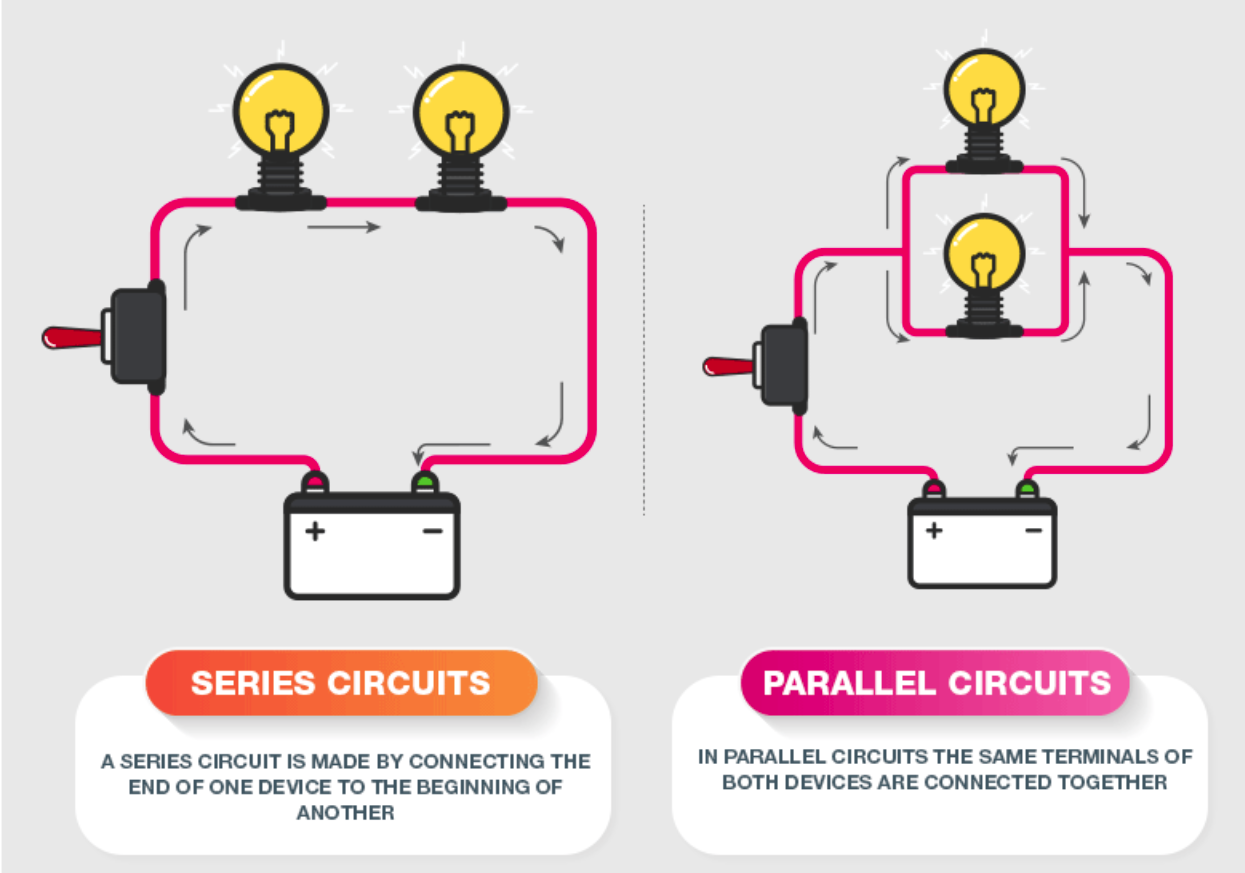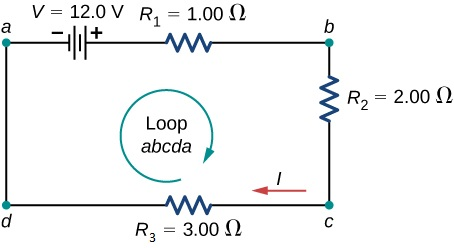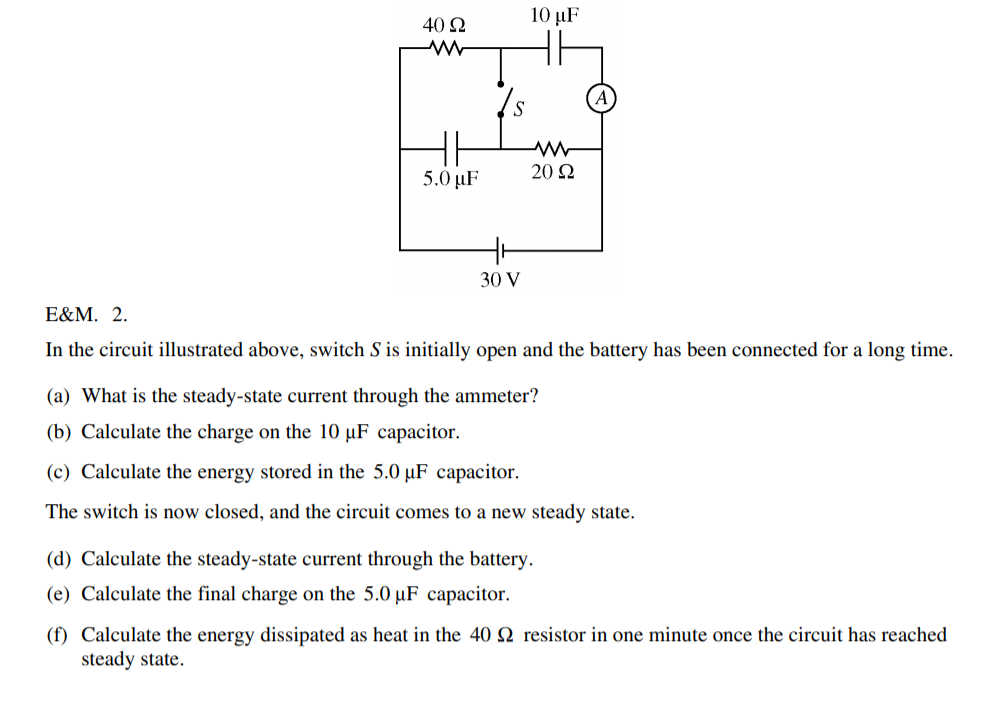K
Krish Gupta
Daniella Garcia-Loos
AP Physics 2 🧲
61 resourcesSee Units
Kirchhoff’s Loop Rule
A circuit is a closed loop of electrical current. If the loop is open or doesn’t allow the current to return to its starting position, electricity will not flow through the circuit and any devices on that partial loop will not work. Common ways of breaking a circuit include switches or blown/removed light bulbs.
Kirchhoff's loop rule is a principle in physics that is used to analyze electrical circuits. It states that the sum of the voltage drops around a closed loop in a circuit must be equal to the sum of the voltage gains around the loop.
Here are some key points about Kirchhoff's loop rule:
- Kirchhoff's loop rule is a consequence of the conservation of energy and the fact that electric potential energy can be converted into other forms of energy, such as kinetic energy.
- Kirchhoff's loop rule is used to analyze electrical circuits and predict the behavior of voltage and current in the circuit. It is a useful tool for designing and troubleshooting electrical systems.
- Kirchhoff's loop rule is based on the principle that the total voltage around a closed loop must be equal to the sum of the voltage drops and the voltage gains around the loop. This means that the sum of the voltage drops in the circuit must be equal to the sum of the voltage gains.
- Kirchhoff's loop rule is often used in conjunction with Kirchhoff's junction rule, which states that the sum of the currents entering a junction in a circuit must be equal to the sum of the currents leaving the junction.
Types of Circuits (Series vs. Parallel)
Circuit components can be connected in either series or parallel. A series connection has 1 path between the components that all the current must travel through. A parallel circuit has 2 or more paths between the components. The current in a parallel circuit is split between all the available paths.
Here are some key points about parallel and series connections:
- In a parallel connection, the components or circuits are connected so that they have the same voltage across them. The current is divided among the components or circuits and can flow through each of them independently.
- In a series connection, the components or circuits are connected so that the current flows through them in sequence. The voltage is shared among the components or circuits and is the same across all of them.
- Parallel connections are used to increase the total current-carrying capacity of a circuit or to provide multiple paths for the current to flow through. They are often used to distribute power to multiple devices or circuits.
- Series connections are used to increase the total resistance of a circuit or to create a voltage divider. They are often used to control the voltage applied to a circuit or device.

Image via byjus.com
Kirchhoff's Voltage Law (Loop Rule) ➿
Kirchhoff’s Voltage Law (KVL) is used when we’re trying to analyze the current, voltage, and resistance of a circuit. The law simply states that if you have a loop in a circuit, the total voltage drop across the components and voltage source must equal 0. (Oftentimes, I’ll reword this to say that the voltage drops of the components must equal the voltage of the source).

Image from phys.libretexts.org/
When we look at the entire circuit as a system, energy must be conserved. All of the electrical energy provided by the battery is given to the electrons (and is represented as voltage). As the electrons do work in the other components, the energy is transferred to the components and the voltage must decrease. When the electrons reach the battery again, they have completed the loop and given all their energy away.
Kirchhoff's voltage law (KVL) is a principle in physics that is used to analyze electrical circuits. It states that the sum of the voltage drops around a closed loop in a circuit must be equal to the sum of the voltage gains around the loop.
Here are some key points about Kirchhoff's voltage law:
- Kirchhoff's voltage law is a consequence of the conservation of energy and the fact that electric potential energy can be converted into other forms of energy, such as kinetic energy.
- Kirchhoff's voltage law is used to analyze electrical circuits and predict the behavior of voltage and current in the circuit. It is a useful tool for designing and troubleshooting electrical systems.
- Kirchhoff's voltage law is based on the principle that the total voltage around a closed loop must be equal to the sum of the voltage drops and the voltage gains around the loop. This means that the sum of the voltage drops in the circuit must be equal to the sum of the voltage gains.
- Kirchhoff's voltage law is often used in conjunction with Kirchhoff's current law, which states that the sum of the currents entering a junction in a circuit must be equal to the sum of the currents leaving the junction.
Practice Question:
1.

Image from collegeboard.org
a) With the switch open and all the capacitors acting like open switches as well ("connected for a long time"), there's no current flowing through the ammeter.
Browse Study Guides By Unit
💧Unit 1 – Fluids
🔥Unit 2 – Thermodynamics
⚡️Unit 3 – Electric Force, Field, & Potential
💡Unit 4 – Electric Circuits
🧲Unit 5 – Magnetism & Electromagnetic Induction
🔍Unit 6 – Geometric & Physical Optics
⚛️Unit 7 – Quantum, Atomic, & Nuclear Physics
📆Big Reviews: Finals & Exam Prep
📚Study Tools

Fiveable
Resources
© 2025 Fiveable Inc. All rights reserved.